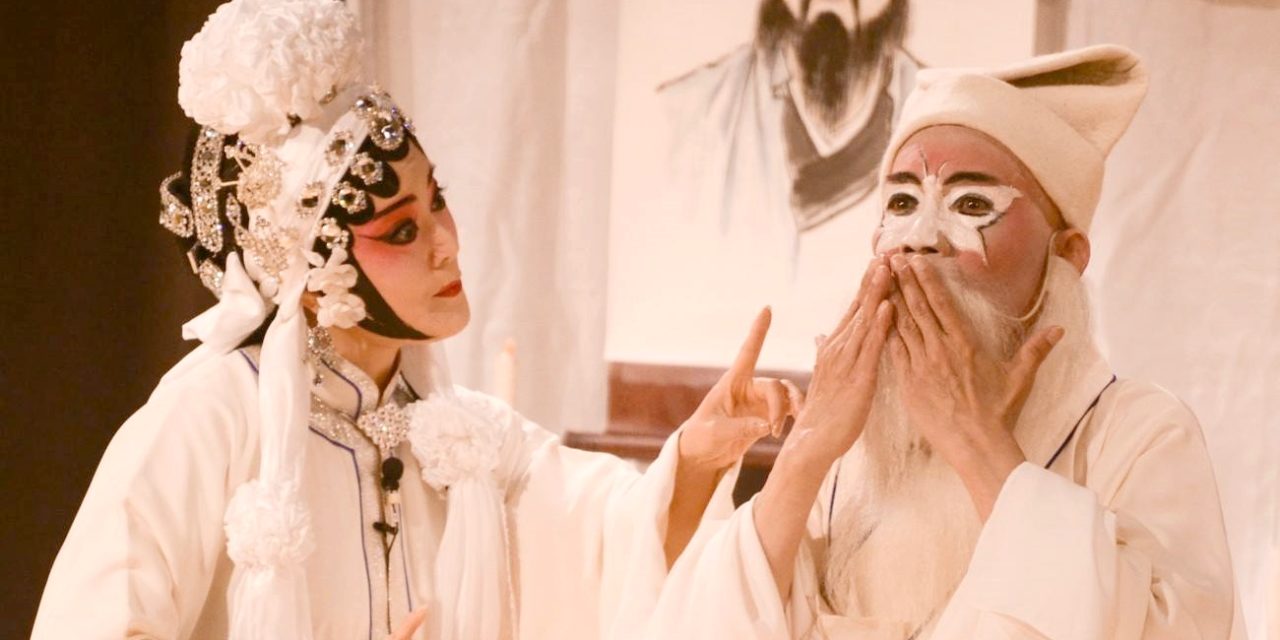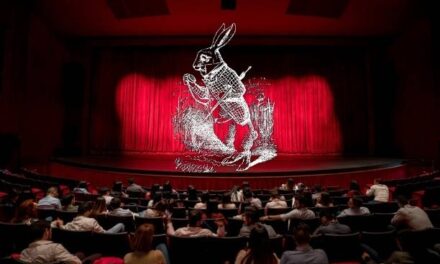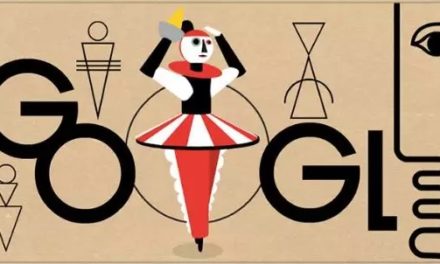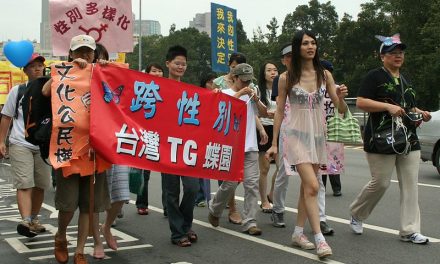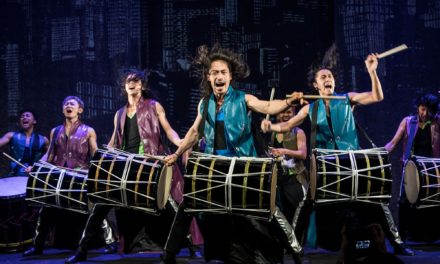In August 2015, I attended the program Classical Beauties presented by Queens Library at Flushing, New York, featuring performances by the Kunqu Society and the New York Chinese Opera Society. The program was well-attended, attracting an audience that included both Chinese and non-Chinese, ranging in age from children to the elderly. I happened to sit between a Chinese lady with a young Chinese girl on one side and two American gentlemen on the other. The Chinese lady was prepared: during the program, she introduced the characters on stage to the girl by comparing them to theatre figures illustrated in a book that she had brought along. The American adults, on the other hand, were very responsive to the costumes and adornments of the characters, turning to each other from time to time and commenting on their attractiveness.
For the first-time audience of traditional Chinese theatre, whether Chinese or non-Chinese, the distinct appearance of the characters often leaves a deep visual impression. This is intentional: Through the beauty and theatricality of headdresses, facial make-up, and costumes, traditional Chinese theatre aims to make very clear to the audience the social status, age, personality, and circumstances of a character. Understanding the visual representations and their meanings, therefore, stands as the first way of appreciating the art form.
In Classical Beauties, Widow Tian of The Matchmaking appears in a white costume and headdress, indicating that the character is in mourning. Tian, however, is also developing feelings for Prince Wangsun—a social taboo for a new widow. Her inner yearning is visually conveyed when she accidentally pulls out a red handkerchief hidden in her sleeve. In a sharp contrast to the white mourning dress, the red handkerchief reveals much of her heart’s desire—in Chinese culture, the color red is typically used for marital and celebratory occasions. Another distinct visual representation from the play could be seen in the facial makeup worn by the prince’s servant, a matchmaker. His makeup, which evokes the image of a butterfly, is a hint that the matchmaker is a butterfly turned into a human form by the prince, who is actually wearing a disguise himself to test Tian’s fidelity: he is her supposedly dead husband Zhuangzhou.
In the next play, A Banquet for Two, Emperor Minghuang and Lady Yang have a casual drinking party in the inner court garden. They wear pi, robes that open down the center front, in a specific hue of yellow. Pi in this specific color is only worn by the royal family; the dress also indicates that the emperor and lady are in a private setting because pi is casual dress worn by state officials and their families as well as the wealthy. Similar visual uses of color and cut are seen in the third play, Parting at the Sha Bridge, in which Emperor Li Shiming and his entourage bid farewell to the monk Xuanzang as he begins his journey to India to obtain Buddhist scriptures. The various costumes worn by the characters clearly distinguish between the emperor, his lords, his attendants, and the monk; they also create an arresting visual display on stage.
The examples from the program offer some glimpses into pre-modern Chinese dress code, the creative license theatre excises on facial makeup, and the symbolic meanings of specific colors in Chinese conception. They leave a deep visual impression on the audience and may trigger curiosity and further interest in the reasons and developments of these cultural and theatrical practices and aesthetic principles. The Chinese lady sitting next to me at the program sought help from a book; reading and research, via library materials and other channels, may lead to further understanding and appreciation of traditional Chinese theatre’s visual representations and meanings.
In addition to visual stage representation, traditional Chinese theatre also offers richness and diversity in music. It includes multiple musical styles which, when coupled with local dialects, give rise to distinct theatre forms. Two forms—Kun theatre (kunqu) and Beijing (Peking) opera (jingju)—were presented in the Classical Beauties program. Kun theatre uses the flute as its lead musical instrument and Suzhounese as a spoken dialect. By contrast, Beijing opera employs fiddles and standard Mandarin.
As Chinese from different regional and cultural backgrounds have emigrated to the United States, they have brought with them various forms of traditional Chinese theatre. In New York, besides Kun theatre and Beijing opera, the oldest, which continues to thrive, is Cantonese opera (yueju). This form appeared first because the earliest Chinese immigrants mostly came from Guangdong (Canton) province in China. The other visible (and audible) forms include Shaoxing opera (yueju), Fujianese opera (minju), Taiwanese opera (gezaixi), and Shanghai opera (huju). For Chinese with the same regional and cultural backgrounds, the familiar music and theatre performance brings feelings of joy and closeness to the homeland.
Because each form has its own distinct sound, the second way of appreciating traditional Chinese theatre is to attend to the characteristics of its music. When juxtaposed with Beijing opera in the Classical Beauties program, the music of Kun theatre is, by comparison, subtler and quieter. The more lively and interactive Beijing form, on the other hand, creates opportunities for the audience to verbally enliven the performance by shouting out bravos.
Ultimately, like many other performing arts, traditional Chinese theatre aims to lead the audience into the world of the play, absorbing its story and characters through its rich and diverse visual and aural approaches. The three plays in the Classical Beauties program depict segments from the stories of Zhuangzhou’s test of his wife, Emperor Minghuang and Lady Yang’s romance, and Xuanzang’s journey to India, respectively. The practice of putting separate stories on the same program is known as the actable plays (zhezixi) presentation style. Common in traditional Chinese theatre performances, this practice derives from the work of performers who aspire to captivate the audience’s attention. By extracting and refining sections of plays that best showcase their acting excellence in, for example, singing, movement, or fighting, performers have turned these sections into independent plays.
Through strenuous training and exercise of creativity, performers have preserved and ingeniously created visually and aurally stunning performing techniques, sustaining the live performing traditions of Chinese theatre. Outstanding performers employ these techniques not only to catch the audience’s attention but also to portray the characters with subtlety and depth and draw viewers into the character’s inner worlds. In addition to understanding and appreciating the visual and aural aspects of traditional Chinese theatre, therefore, the third way of appreciating the art form is for the audience to follow the lead of the performers into the world of the play.
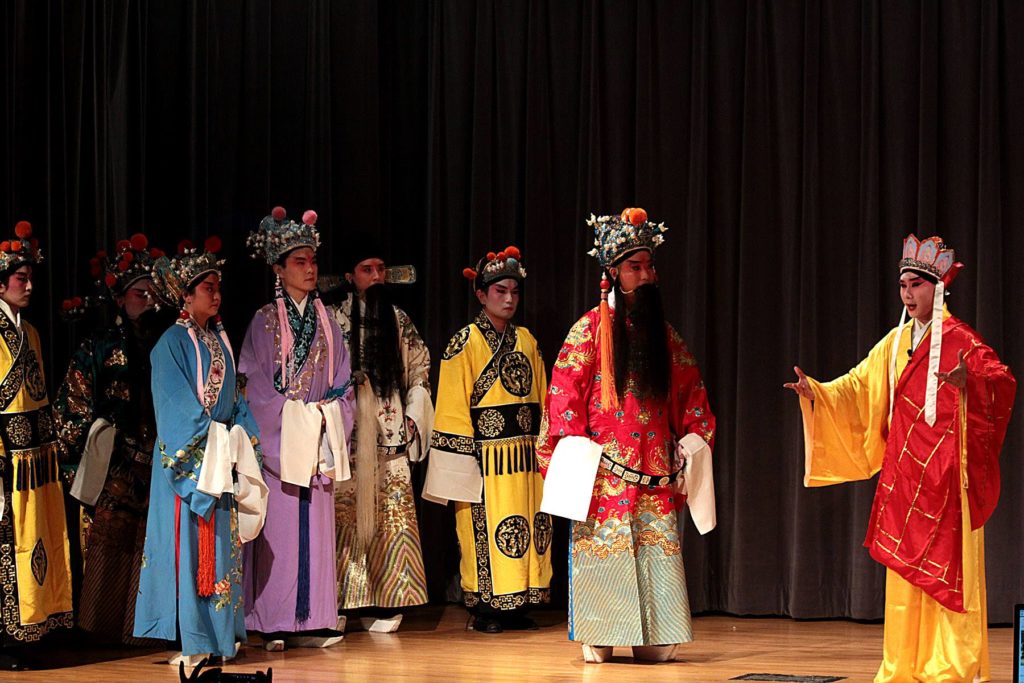
Parting at the Sha Bridge (i.e., A Farewell at the Sandy Bridge). Photo courtesy of the New York Chinese Opera Society
This post was written by the author in their personal capacity.The opinions expressed in this article are the author’s own and do not reflect the view of The Theatre Times, their staff or collaborators.
This post was written by Dongshin Chang.
The views expressed here belong to the author and do not necessarily reflect our views and opinions.

